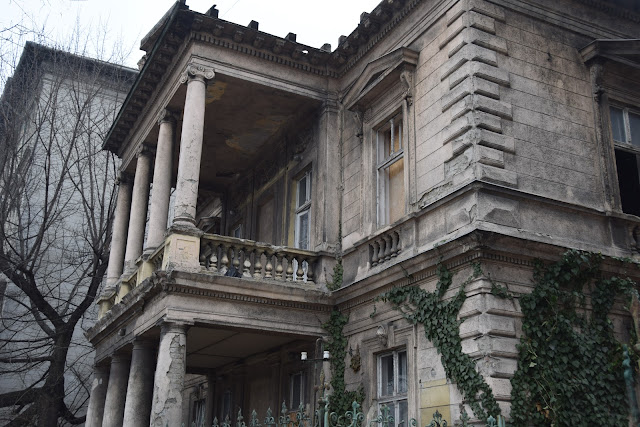When we were in Prague we went to the opera, mainly because I wanted to see the interior of the National Theater (see below), which is only possible during a performance. I chose two one act plays by Carl Orff mainly because I hadn't ever seen them (much less heard of them) before, and they were on a good night for us.
Before the opera, the only music I knew from Orf was Carmina Burana. Reading the probably best program I have ever seen (a 25 academic essay on Orff, the origins of CB,the complex relation of his music with Nazi Germany and more), I discovered that these two one-act operas were sort of fractured fairy tales. The first one was Die Kluge, which we liked best, and which I will talk about here. The fracturing comes in many forms. There is little (if any) psychological depth; instead the action revolves around a series of riddles. The helpful program points out the relation to 1001 Arabian Nights. All this is enhanced by the set and wardrobe that were made for this performance.
The program says "the aesthetics of our production comes across as a fantasy cross-over of loose inspiration by 1920s constructivism and op-art." But I also see cubism which was the primary Czech contribution to avant-garde architecture. For example, the House at the Black Madonna built 1911-12 by Josef Gocar (now the Museum of Cubist Art).
It was a marvelous, and marvelously unexpected, pleasure. And it got us into the National Theater.
The National Theater was important (like the Hungarian Parliament or the Millenium buildings) in establishing a Czech identity. It was constructed by publicly raised funds, and its iconography paid attention to the importance of language and literature to the Czeck people.
The National Theater opened in 1881. After eleven performances of Smetana's Libuse, composed specifically for the event, the theater burned to the ground. A second collection to raise funds was immediately initiated and was an enormous success: the theater was rebuilt. How important art, architecture, literature,language was to Czeck identity.
All the ornamentation is allegorical, done to a strict iconographic program.
The interior
The famous curtain. It represents not only the building of the nation but the building of the theater as well.
And here we are enjoying it all. Ah Europe!
#CarlOrff
#DieKluge
#Prague
#NationalTheater




























































